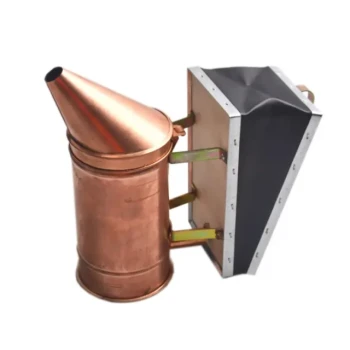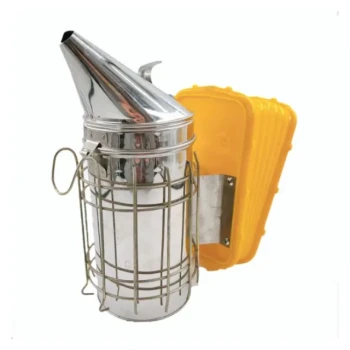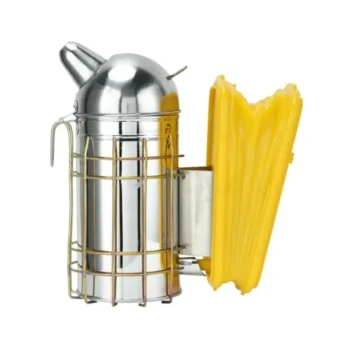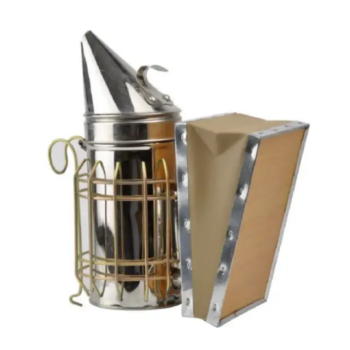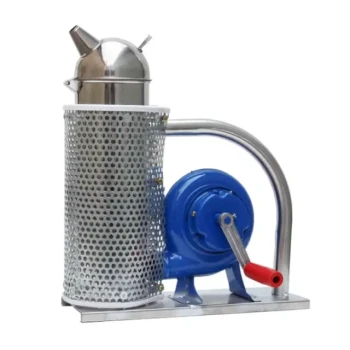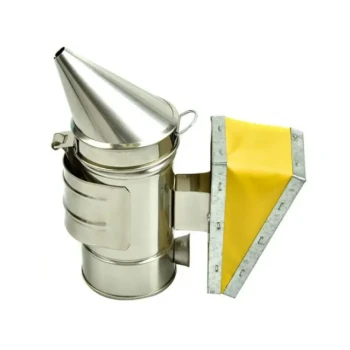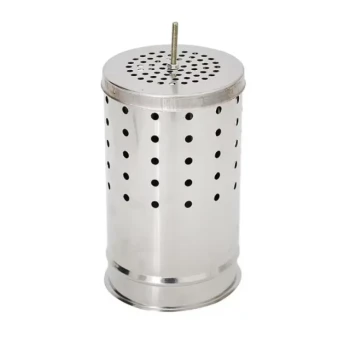The short answer is that smoke calms honey bees by disrupting their primary methods of communication and defense. It masks the alarm pheromones they use to signal danger and triggers a survival instinct to eat honey, which makes them physically less able to sting. This allows beekeepers to safely inspect the hive and collect honey without harming the colony.
Using smoke is not about sedating the bees; it's a strategic tool that leverages their natural instincts to de-escalate their defensive response, ensuring a safer interaction for both the beekeeper and the hive.
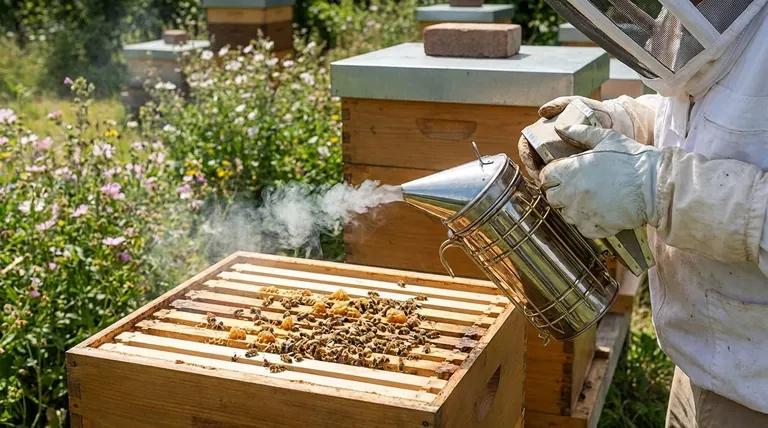
The Dual-Action Mechanism of Smoke
To understand why smoke is so effective, you need to see it from the bee's perspective. The introduction of smoke triggers two distinct and powerful reactions that fundamentally alter the colony's behavior.
Masking the Alarm Pheromone
When a bee feels threatened or stings, it releases an alarm pheromone. This chemical signal instantly alerts other guard bees in the hive to the location of the threat, inciting a coordinated defensive attack.
Smoke effectively scrambles this communication channel. The particles in the smoke bind with the receptors the bees use to detect the pheromone, rendering them unable to "smell" the alarm.
Triggering a Survival Instinct
Smoke also triggers a primal fear of fire. The bees' instinctual response is to assume their hive is in danger and they may need to abandon it.
In preparation for this, they immediately begin to engorge themselves on honey. This ensures they have enough food reserves to survive the journey and build a new home if necessary.
The Physical Effect of Engorgement
A bee with a full belly of honey is a docile bee. Its abdomen becomes so swollen and heavy from the honey that it is physically difficult for the bee to bend into the proper position to sting.
This combination of disrupted communication and a full stomach makes the colony remarkably calm and manageable.
Understanding the Trade-offs and Best Practices
While smoke is an essential tool, it must be used with skill and restraint. Misuse can cause more harm than good for both the bees and the final honey product.
The Risk of Excessive Smoke
Using too much smoke, or smoke that is too hot, can be counterproductive. It can agitate the bees, cause them to become disoriented, or even harm them.
Furthermore, excessive smoke during honey collection can contaminate the honey, giving it an undesirable smoky flavor and aroma.
Beyond Smoke: Complementary Tools
Smoke is rarely used in isolation. Beekeepers often use a bee brush as a complementary tool.
This is a soft-bristled brush used to gently sweep remaining bees off a frame of honey. This allows for the careful and harmless removal of any stragglers without agitating them.
Applying the Right Technique for Your Goal
The goal is to use the minimum amount of cool, white smoke necessary to achieve a calm hive. How you apply it depends on your specific task.
- If your primary focus is a routine hive inspection: Use a few gentle puffs at the entrance and under the top cover to keep the colony calm while you work.
- If your primary focus is collecting honey: Use smoke very sparingly to prevent tainting the honey's flavor, relying more on a bee brush to clear the frames.
- If your primary focus is managing an agitated hive: A bit more smoke may be necessary to interrupt a strong defensive response and regain control of the situation.
Ultimately, understanding bee behavior is the most crucial skill for any beekeeper, allowing you to use tools like smoke with precision and care.
Summary Table:
| Effect of Smoke | Purpose | Key Outcome |
|---|---|---|
| Masks Alarm Pheromones | Disrupts bee communication | Prevents coordinated defensive attacks |
| Triggers Survival Instinct | Encourages bees to engorge on honey | Makes bees docile and physically unable to sting easily |
| Enables Safe Hive Access | Allows beekeeper to work calmly | Protects both the beekeeper and the colony during inspection/harvest |
Ready to harvest honey with confidence and care? Equip your apiary with professional-grade smokers and bee brushes from HONESTBEE. We supply durable, reliable beekeeping supplies and equipment designed for the demands of commercial apiaries and distributors. Enhance your hive management and protect your valuable colonies. Contact HONESTBEE today to discuss your wholesale needs and optimize your beekeeping operations.
Visual Guide
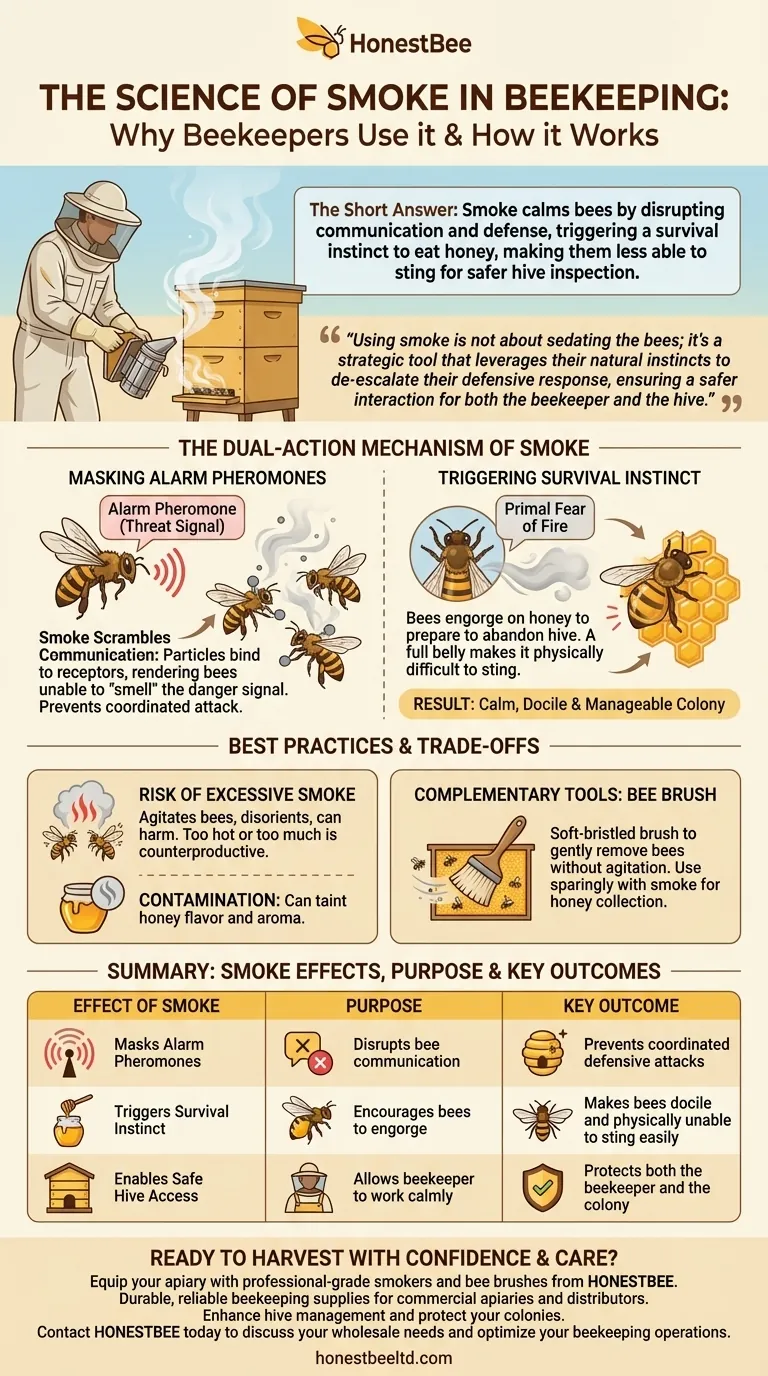
Related Products
- European Stainless Steel Bee Smoker for Honey Bee Hive
- Premium Traditional Copper Bee Smoker with Bellows
- Professional Bee Smoker with Elongated Spout and Durable Bellows for Beekeeping
- Economy Galvanized Beekeeping Honey Bee Smoker for Wholesale
- Heavy-Duty Bee Smoker with Durable Plastic Bellows for Beekeeping
People Also Ask
- What are the advantages of a high-quality bee smoker? Achieve Calm, Confident Hive Management
- How does a smoker help during hive inspections? The Key to Calm, Safe Beekeeping
- What are the benefits of cleaning a bee smoker? Ensure Hive Safety and Bee Health
- What are the steps to operate a bee smoker? Master the Art of Gentle Beehive Management
- What factors should be considered when choosing a bee smoker? Find the Right Tool for Safe, Effective Hive Management

